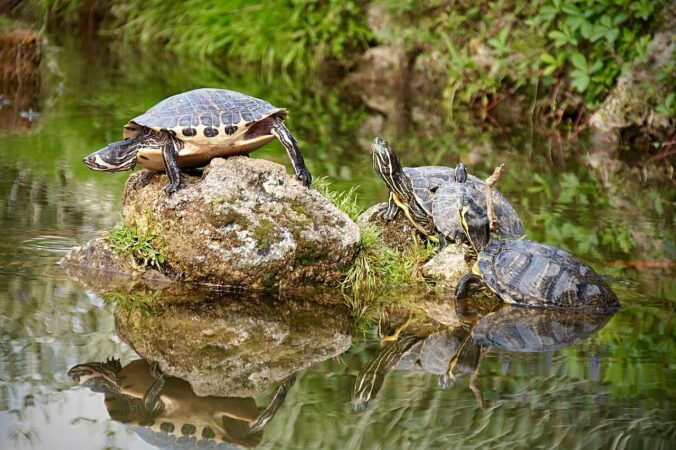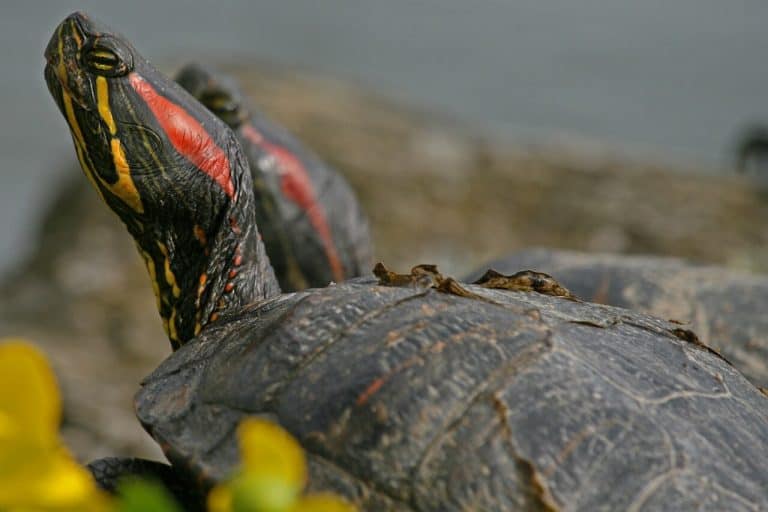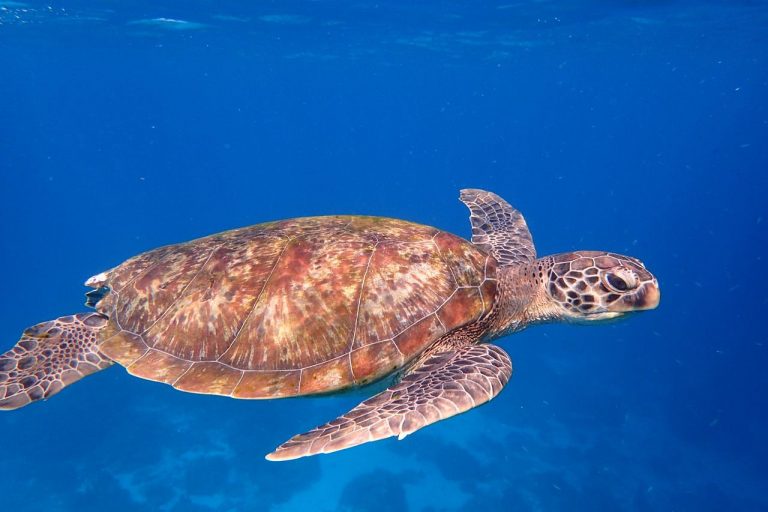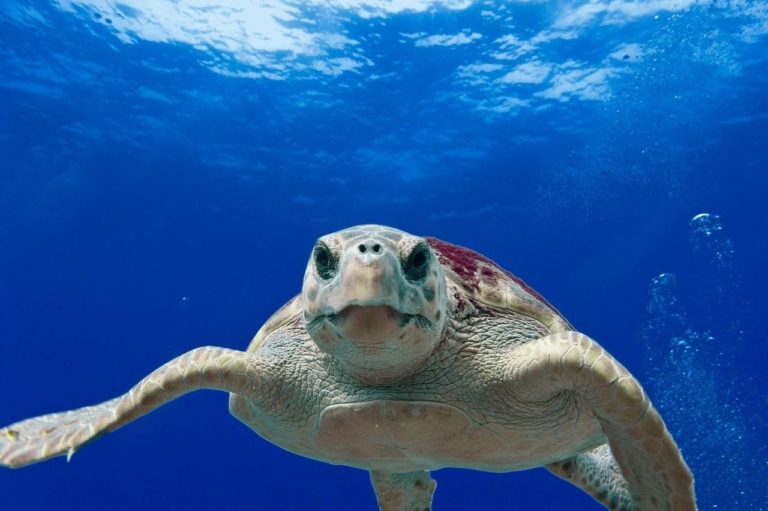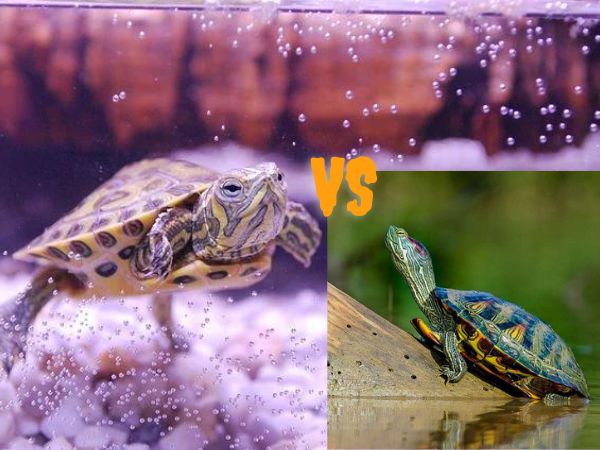Types of Pond Turtles | Pet Turtle Species For Pond
Interested in domesticating a turtle at the backyard pond? If yes, congratulations, you have successfully landed on the appropriate page to find the best turtle species for ponds. We bring you the most popular, easy-going, and suitable types of pond turtles that you can pet in the home pond.
Although all the species included in today’s list are ideal for pond rearing, you still need to select them depending on your local climate, weather, and pond size, as well as the availability of natural resources on the pond.
Oh yes, we have also included how to make an ideal pond for your turtles in the article. Hence, it’s of lifetime 2-in-1 bonus for you, buds.
So, don’t let the change go.
Types of Pond Turtles
There’re several semi-aquatic and aquatic turtles that people these days domesticate for petting. However, not all of them are equally adaptable in-home pond conditions. Hence, we checked out the species carefully and took expert turtle owners’ opinions to put up this list.
[amazon box=”B09GNLSNLG” grid=”1″ price=”none”]
Painted Turtles
Painted turtles, aka, Chrysemys picta, is an attractive and agile native USA turtle for ponds. It is relatively more tolerant of the cooling weather of the pond which makes it even more suitable for pond rearing.
The species is widely found all across North America from Mexico all way down to Canada. This is a relatively easy-going species that require less care. Also, a beautiful red accented shell and occasional yellow marking at the back makes painted turtles look pretty.
Specifications
Ideal temperature: 20-23°C
Length: 5-7 inches
Mating season: Spring and Fall
Food habit: Small prey and vegetation
Red-eared Slider
Red-eared Slider is widely known as red-eared terrapin with the scientific name Trachemys scripta elegans. Likewise, any terrapin, red-eared sliders spend time on the land and in the pond almost equally. So, you need to take care of the fact that they can quickly come out of the water and then go in without any trouble. It will make them healthy and happy.
You will see that its eyes on either side of the head have got a vibrant splash of red color from what it gets the name. What’s more, the species is highly adaptable in both natural and encaged conditions as well as in all weather. Also, it will eat just about everything, so, the turtle needs less care.
However, since it is one of the highly invasive turtle species, you need to rear it in an enclosed pond or tank to minimize the risk of fleeing away and invasion of your local area.
Specifications
Ideal temperature: 15-25°C
Length: 6-8 inches
Mating season: March- July
Food habits: Insects, algae, fruits, and even baby birds.
Common Map Turtle
Common Map Turtle or Graptemys geographic is a famous native American turtle that is widely reared up in the pond. The turtle comes with a neat and distinctive mapping on its shell to get its name. However, the map marking varies significantly from one to another sub-species of this famous pond-rearing turtle. For instance, northern map turtles come with a flat shell, but sawback map turtles have a bold saw-like marking on top of its shell.
However, taking care of this beautiful turtle is a bit challenging since it is susceptible to temperature changes in water and also vulnerable to deadly bacterial infections and shell rot. Also, the species prefer moving water, so you need to create disturbance in the water from time to time. But they are great pets with easy-going nature and beautiful shells.
Specifications
Ideal temperature: 22-26°C
Length: Females 6-10 inches and males grow half the female length
Mating season: Fall and Spring
Food habit: Carnivorous
Box Turtle
Box turtle (Terrapene) is undoubtedly one of the most popular pond-rearing turtles you will find all across the globe. Its easygoing attitude and convenient caring make it the top choice for most turtle lovers.
It has four different subspecies. The North American subspecies are found throughout the USA, Mexico, and Canada. Whereas, the Asian Box Turtle is seen widely in the Asian region.
Box turtles have a sizeable dome-like shell, which gives them an attractive appearance. The shell may have extensive yellowish spots on it but not for all the species. However, with low productivity, the USA has banned Box Turtle petting in some states. Also, don’t take one from the wild instead buy one from an ethically guided pet shop.
Box turtles don’t like much handling and so let them isolate for their happiness. Also, they like warmer weather and would eat anything from veggies to snails.
Specifications
Ideal temperature: Moderate to warm temperature.
Length: 8-10 inches on an average
Mating season: Not identified
Food habit: Omnivorous
Other species
We have already discussed the most popular four species that you can put in a backyard pond. However, there are other species as well that you can rear up in the pond. Although, people actually don’t favor them, with little adaptation you can domesticate these species also.
The list follows:
- African Sideneck Turtle
- Yellow-bellied Slider
- European Pond Terrapin
Idea Pond For Turtles: Things You Should Consider
If you are enthusiastic about rearing turtles in the pond, you need to maintain a few things to make the pond ideal for turtles.
First off, secure the pond area from predators. It is as important as building the pond itself. You need to protect the turtles from raccoons, big birds, rats, and moles, and sometimes your pet dogs can also be a threat.
Next thing, you must balance between the sunlight and shedding around and on the pond. It is because turtles often come out of the water and look for a shed to take a rest. Also, overexposure to the sunlight of the pond will help the growth of algae, which sometimes causes skin irritation in the turtles.
You should also focus on the pond size. For instance, if you want to keep five to ten turtles, the pond should be anywhere between 80-100 square feet with an average depth of 3-5 feet. Lastly, you should also place some logs around the pond so that turtles may busk on it.
Final Words:
Turtles are pretty pets. It lives for years, even centuries, without much care. Hence, the popularity of turtle domestication increasing day by day. Standing on such a scenario, we have enlisted four of the most popular and easy-to-rear turtles suitable for ponds.
We hope that you will find these species easy to pet in your pond with our brief description of how to create an ideal pond for turtles. Happy petting!
